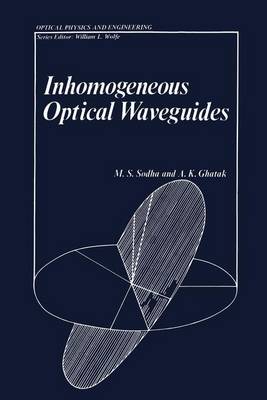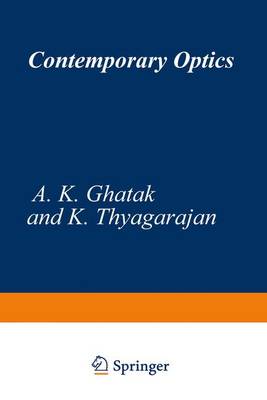Optical Physics and Engineering
2 total works
The propagation of electromagnetic waves in "square-law" media, i.e., media characterized by a quadratic spatial variation of the dielectric constant, has been a favorite subject of investigation in electromagnetic theory. However, with the recent fabrication of glass fibers with a quadratic radial variation of the dielectric constant and the application of such fibers to optical imaging and communications, this subject has also assumed practical importance. Comparison of experimental results on propagation, resolu- tion, and pulse distortion in such inhomogeneous waveguides with theory has put the field on a sound base and spurred further work. The present book aims at presenting a unified view of important aspects of our knowledge of inhomogeneous optical waveguides. A brief discussion of homogeneous dielectric waveguides is unavoidable, since itforms a basis for the appreciation of inhomogeneous waveguides. A short course based on some chapters of this book was offered to graduate students at IIT Delhi and was well received.
We consider that despite the unavoidable mathemati- cal nature of the present book, the comparison of experimental results with theory throughout and the description of fabrication technology (Appen- dixes A and B) should make its appeal universal. The authors are grateful to Dr. K. Thyagarajan for writing most of Chapter 9 and to their colleagues Dr. I. C. Goyal, Dr. B. P. Pal, and Dr. A.
We consider that despite the unavoidable mathemati- cal nature of the present book, the comparison of experimental results with theory throughout and the description of fabrication technology (Appen- dixes A and B) should make its appeal universal. The authors are grateful to Dr. K. Thyagarajan for writing most of Chapter 9 and to their colleagues Dr. I. C. Goyal, Dr. B. P. Pal, and Dr. A.
With the advent of lasers, numerous applications of it such as optical information processing, holography, and optical communication have evolved. These applications have made the study of optics essential for scientists and engineers. The present volume, intended for senior under graduate and first-year graduate students, introduces basic concepts neces sary for an understanding of many of these applications. The book has grown out of lectures given at the Master's level to students of applied optics at the Indian Institute of Technology, New Delhi. Chapters 1-3 deal with geometrical optics, where we develop the theory behind the tracing of rays and calculation of aberrations. The formulas for aberrations are derived from first principles. We use the method in volving Luneburg's treatment starting from Hamilton's equations since we believe that this method is easy to understand. Chapters 4--8 discuss the more important aspects of contemporary physical optics, namely, diffraction, coherence, Fourier optics, and holog raphy. The basis for discussion is the scalar wave equation. A number of applications of spatial frequency filtering and holography are also discussed. With the availability of high-power laser beams, a large number of nonlinear optical phenomena have been studied. Of the various nonlinear phenomena, the self-focusing (or defocusing) of light beams due to the nonlinear dependence of the dielectric constant on intensity has received considerable attention. In Chapter 9 we discuss in detail the steady-state self-focusing of light beams.

